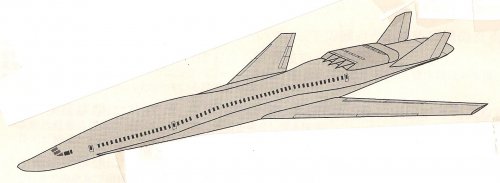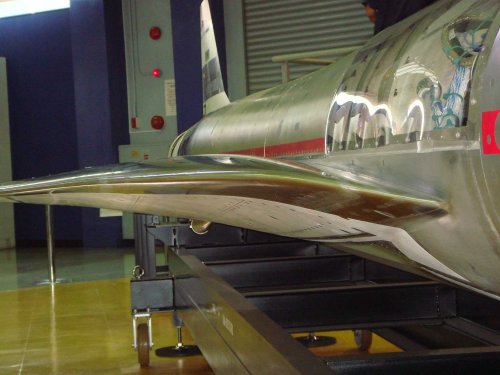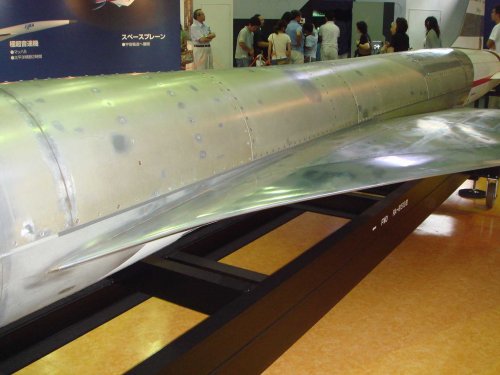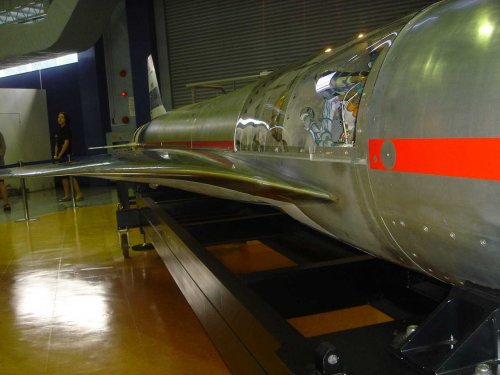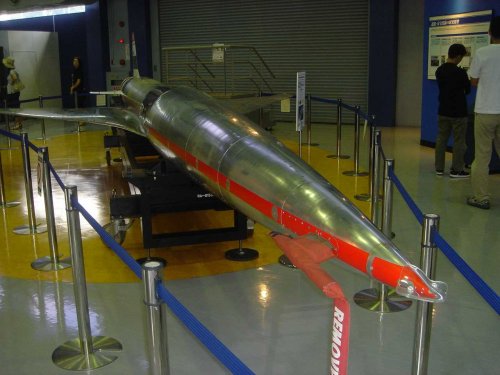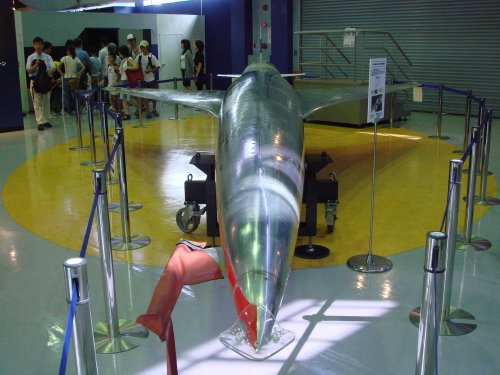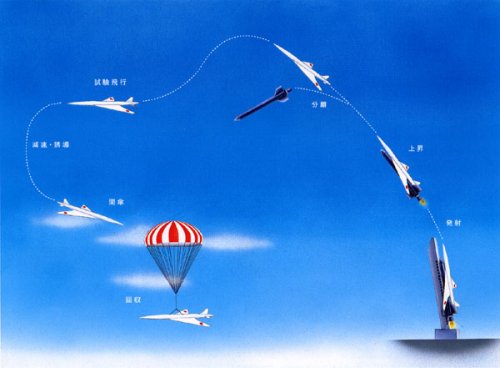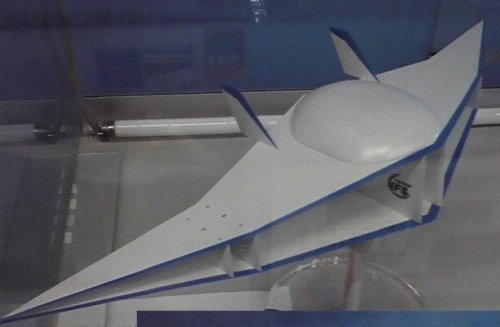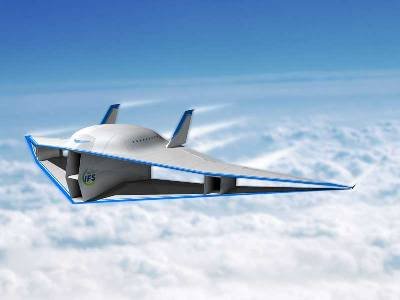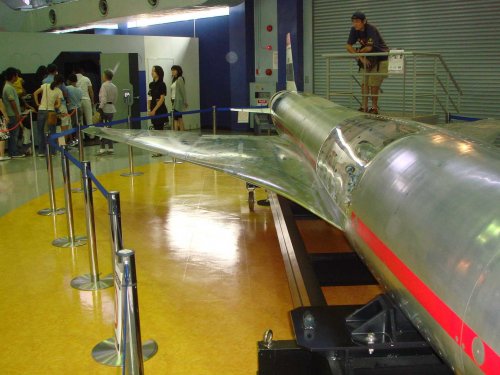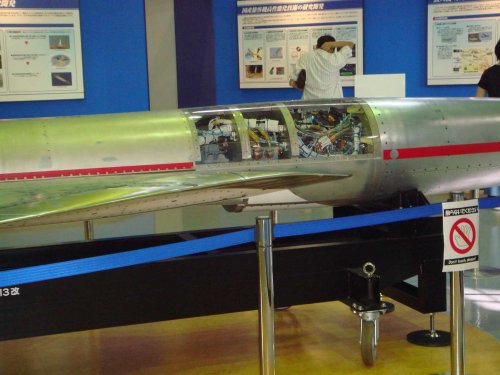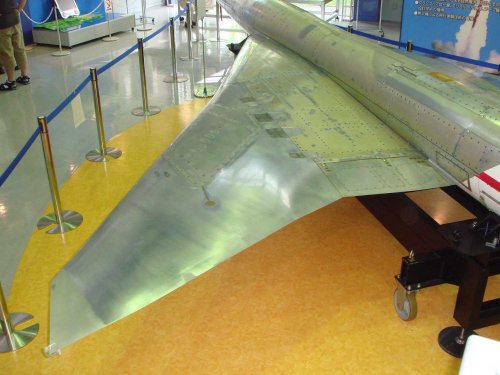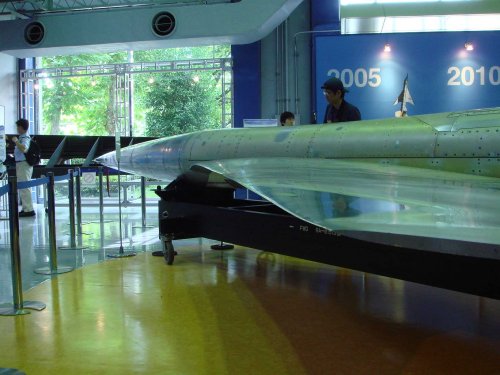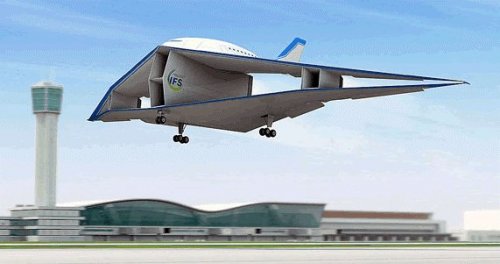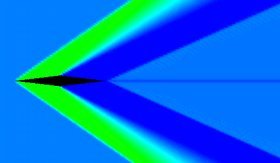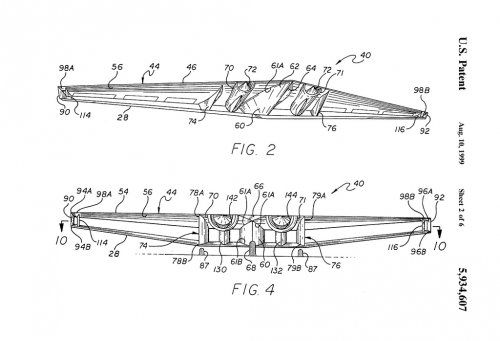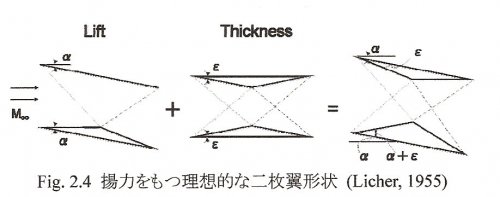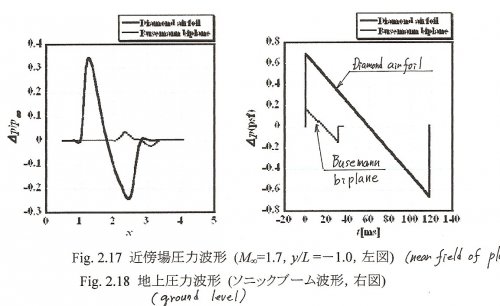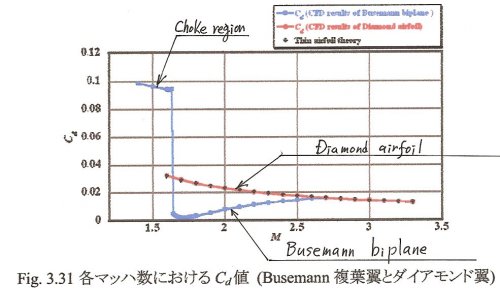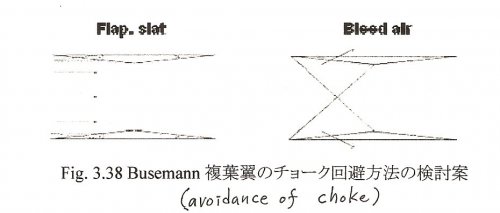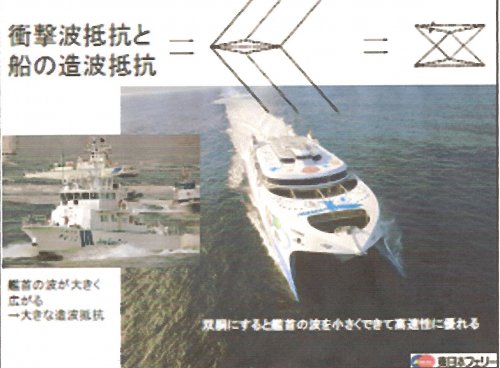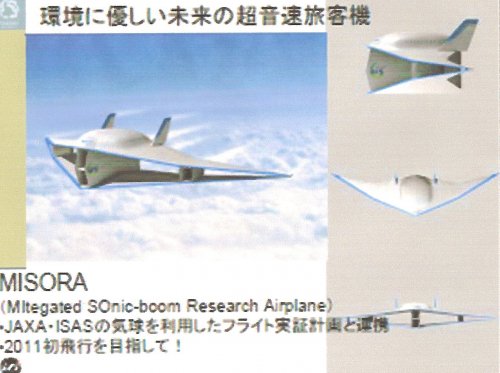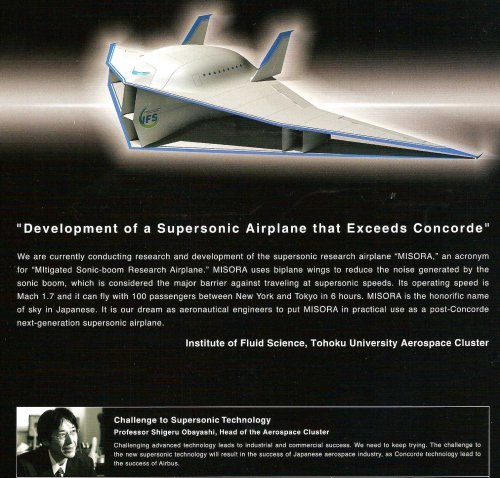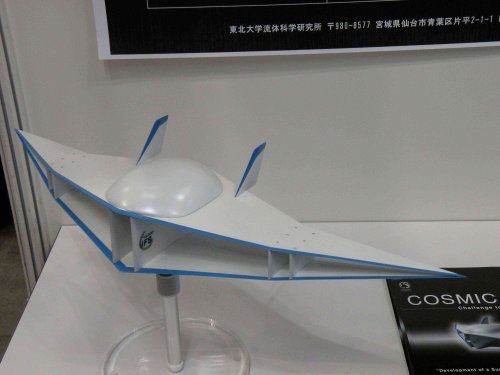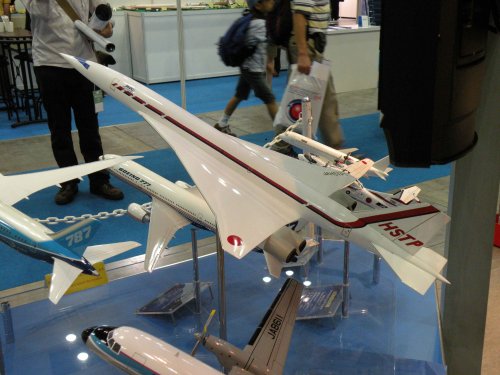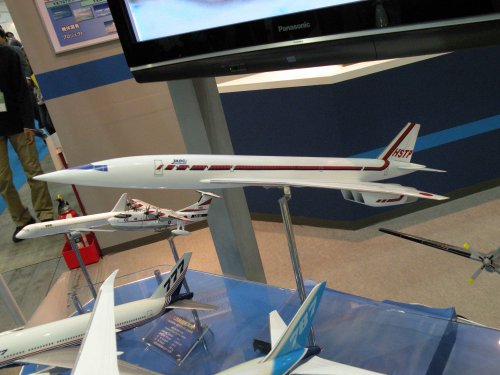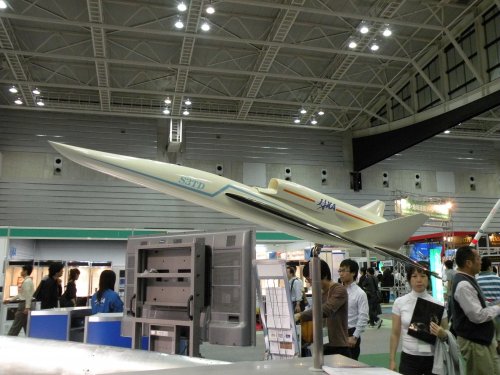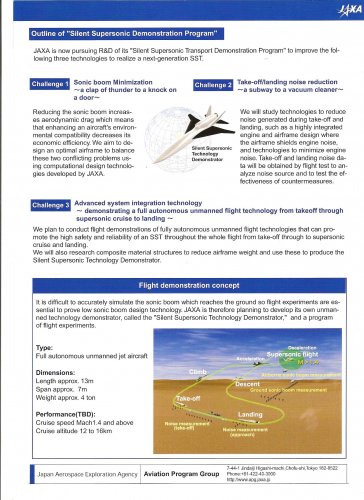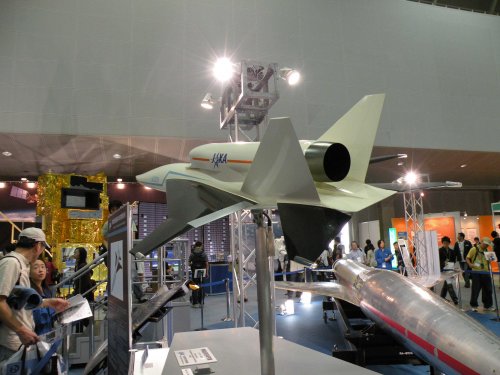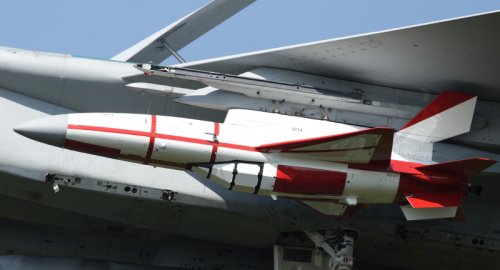Here's a link to a Tohoku University pdf on the thing:
http://www.ifs.tohoku.ac.jp/edge/publications/ifs-biplane.pdf
Here's what it says - not that it helps much:
SILENT SUPERSONIC TRANSPORT
Future Airplane Friendly to Environment
Since the airplane appeared, one hundred years passed. The airplane has become important transportation to support our life. In the future, its role is only expected to grow, as we seek for faster, safer, more comfortable and environmentally friendly airplanes. We research future aircraft concepts.
Breakthrough concept
A new theory that significantly reduces shock waves for supersonic transport (SST) has been established by Prof. Kusunose’s group at Tohoku University under the 21st Century COE Program. The theory introduces a second wing nearly parallel to the conventional wing.
An aircraft flying at supersonic speed creates the shock waves, which are basically compressed air. It might be helpful, for example, to imagine water waves generated at the bow of a moving ship. When these shock waves reach the ground, it will be heard as a noisy explosion (sonic boom). This is one of the fundamental problems preventing commercial aircrafts from supersonic flight. The new theory, which makes use of biplane concept, proves that the interaction between the two wings cancels the strong shock waves generated during supersonic flight.
Although this theory was originally proposed in the 1930s by Adolf Busemann, no supersonic aircraft was available at that time. We verified that the biplane configuration reduces shock wave effects felt on the ground by 85%.
Vision for our century
The airplane of the future should offer safe, fast and comfortable transport to everyone. Although modern airplanes take approximately 12 hours to go from Tokyo to New York, the new SST might fly the same distance in half the time. Quick transportation of people and goods around the world would bring a considerable impact on economy, too.
Health problems of passengers are also an important issue in these days. With the new SST, deep-vein thrombosis after long flights will be eliminated, because the flight time is significantly reduced. Everyone from small children to elderly people would be comfortable.
Innovative ideas are needed for the realization of new SST’s. We study the biplane concept to develop the airplane of the future.

